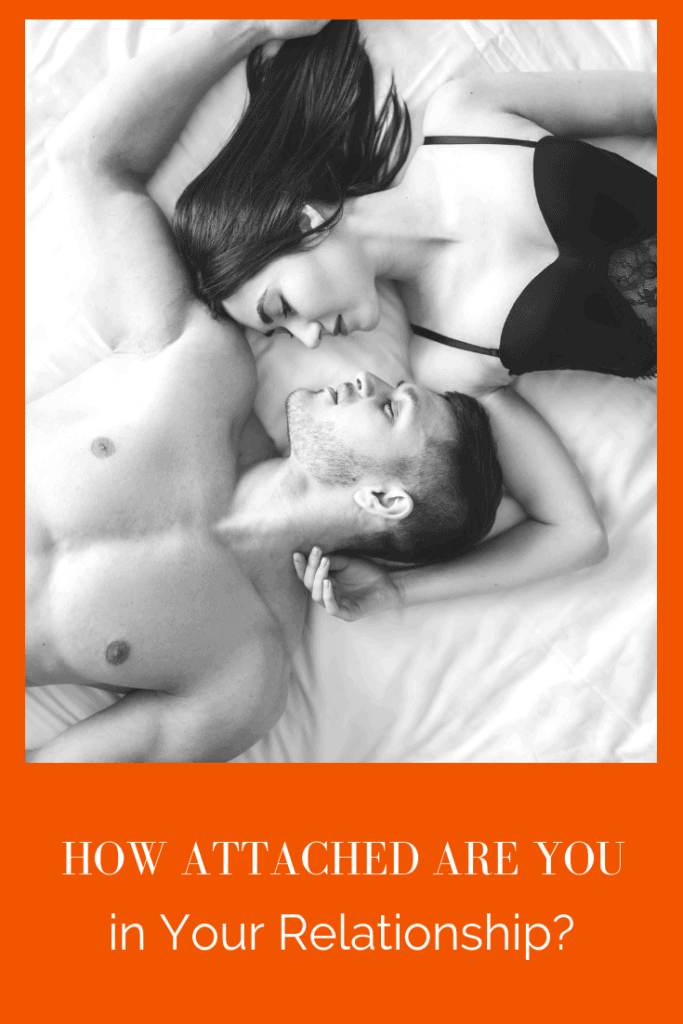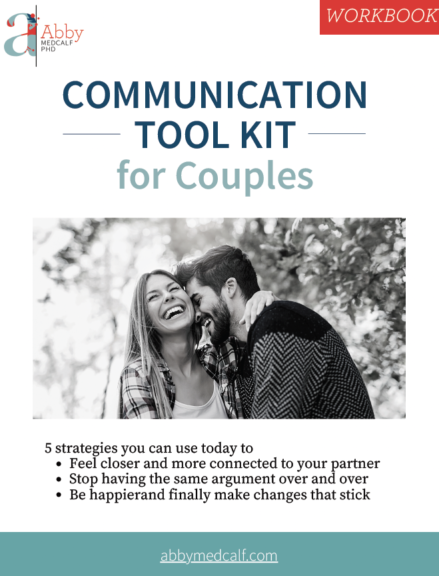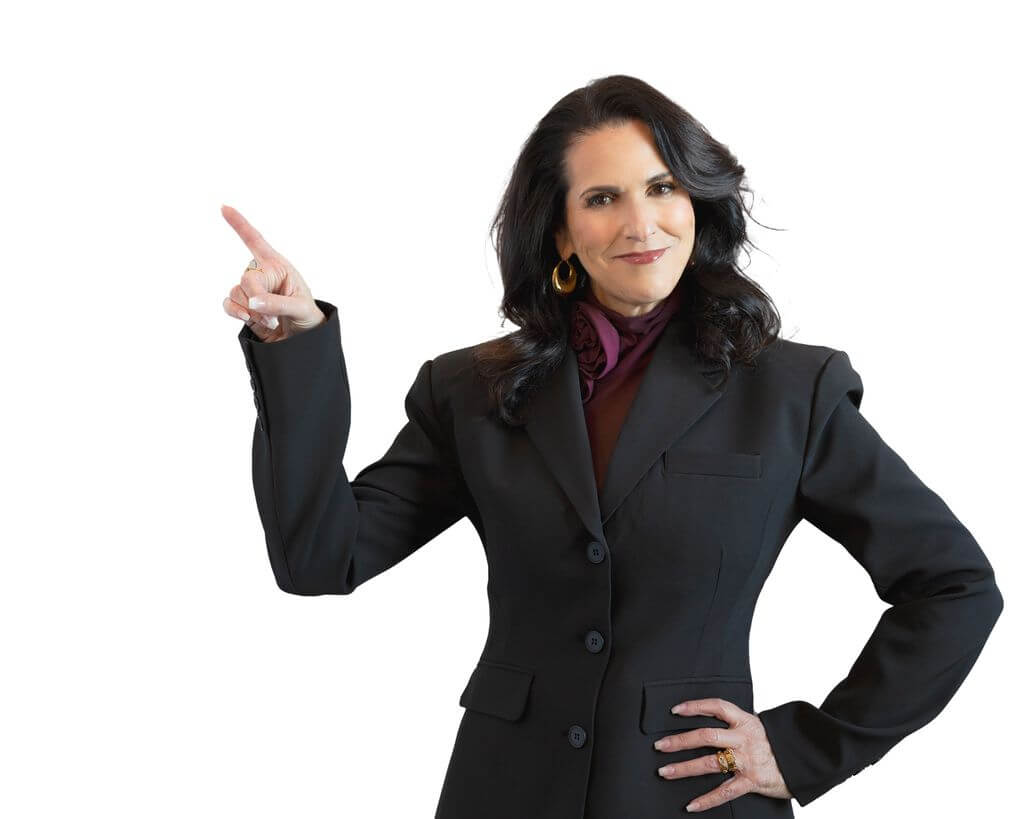
In the 1940s, John Bowlby, a developmental psychologist and psychiatrist was interested in what happened when children and caregivers were separated for brief or longer amounts of time. He believed that how we attached to these caregivers affected our sense of security, our personality development and our ability to form stable relationships throughout our life.
His theory, known as (you guessed it) Attachment Theory was further developed throughout the 1960s by his student Mary Ainsworth. Attachment Theory has been researched now for decades and it has become one of the basic tenants of psychology and how we think about human development and behavior.
Why are You Telling Me This, Abby?
In the 1980s, psychologists Cindy Hazan and Phillip Shaver began looking at whether how we attach as children could relate to our later adult, romantic relationships. Since then, there’s been tons of research and there’s a lot of agreement: how you formed attachments as a kid definitely affects your later relationships.
Knowing your attachment style gives you a bunch of information, such as:
- What romantic partners (and friends) you choose in your life
- How well those relationships will develop
- What issues you’ll repeatedly face in your relationships
- How your relationships will end (depending on your attachment style, you’ll likely experience the crash and burn, ghosting, or ending up as friends)
Figuring out your attachment style can help you understand why you do what you do in your relationships, why you get stuck and how to move forward.
What is Attachment?
Simply put, attachment is the emotional bond you develop with another person and it reflects the trust and security you feel in that relationship.
While the exact terminology used in Attachment Theory differs depending on who’s doing the research and what you’re reading, there are generally three forms of attachment everyone talks about:
- Secure Attachment. Kids who developed this way basically saw their primary caregiver as a safe base of operations. From that safety zone they could explore their world, feeling confident and (you guessed it) secure. They end up trusting others and feel comfortable relying on the people they’re close to.
- Anxious Attachment. Kids who are anxiously attached don’t have complete trust in their caregiver. They don’t feel confident going out into the big bad world to check things out and are often clingy or fussy. This could be because their primary caregiver was nervous and anxious themselves or because of how they reacted to the kid’s needs.
- Avoidant Attachment. These kids don’t trust their primary caregiver either, but they’ve figured out how to self-sooth and get their own needs met. They can seem very independent and even indifferent to the people around them.
Basically, the research shows that kids with a secure attachment styles grow into adults who tend to have more stable and lasting relationships. Meanwhile, kids with avoidant or anxious attachment styles (also known as insecure attachment styles), tend to become adults who experience more negative emotions in their interpersonal relationships and aren’t as good at resolving conflicts.
And just in case you think this is all airy-fairy-woo created by a bunch of over-emotional psychologists, neuroscientists also believe that attachment is a big deal. They believe that attachment is a primal need embedded in our neurocircuitry. In fact, they’ve actually identified neural networks in the brain dedicated to attaching and there’s even a bonding hormone, called oxytocin, that cements all this bonding.
Let’s Get Specific:
Let’s dive into each attachment style so you can get a better understanding of where you sit (and maybe where your partner’s at – although we’re not really supposed to be diagnosing them, but I won’t tell if you won’t). 😉
Anxious Attachment Style:
In the original studies, anxiously attached children would get very upset when their caregiver left the room and would exhibit some form of separation anxiety. Even when their caregiver returned to the room, they wouldn’t calm down. They’d often stay agitated because they didn’t feel reassured and safe.
Anxiously attached people would generally be considered “high maintenance.” They need a lot of attention and the adjectives that usually come to mind are things like “clingy or needy.” There’s an emotional hunger there that’s impossible to truly sate. As adults, they look for high levels of emotional closeness, approval and communication from their partners and can become overly dependent on others.
No matter how much attention they get, it can seem like it’s not enough. They can have a hard time fully trusting that their partners really love them so can be suspicious (or even paranoid). They end up focusing on the negative things their partner does and are often waiting for the other shoe to drop.
Anxiously attached adults spend way too much time and go way too deep with everything. It doesn’t matter whether it was an in-person conversation, a text message, an email or a phone call. They just can’t stop examining and re-examining everything as they try to make sense of it and decipher “what exactly happened.”
As you might imagine, anxiously attached people often end up self-sabotaging, so their relationship becomes a self-fulfilling prophecy. In their fear and insecurity, they can become clingy, demanding, controlling and possessive with their partner. This likely causes their partner to pull away and then they say, “See? I knew she didn’t really love me,” or “I was right not to trust him.”
You might be anxiously attached if:
- Your partner comes home on time every night for a week, but then shows up later one night and you get crazy upset about it.
- You’ve had a close, wonderful day with your partner but go to a party that night and see your partner chatting with someone and get incredibly angry and jealous.
- Your partner doesn’t text you back quickly and you take it personally. You think something’s wrong, you get annoyed, or you worry that you’ve offended them in some way.
- You’re suspicious often of your partner’s activities and demand to see their phone, know their passwords and/or have access to their email. If they don’t give it to you, you try to secretly check these things (I see you social media stalkers).
Anxiously attached people can seem like perfectionists or demand that there’s a “right and wrong” way of doing things. On an unconscious level, they believe that being incredible, amazing and perfect will mean that they’ll be loved.
In a couple, anxiously attached people are often looking for some kind of fantasy. In some ways they might be looking for their partner to be their white knight or fantasy woman who will rescue them or complete them somehow.
Avoidant Attachment Style:
In the original studies, kids with Avoidant Attachment would basically avoid their caregiver. When the caregiver left the room, they didn’t get or stay upset and when the adult returned, they didn’t run over to them. They might smile or nod, but then go about whatever they were doing before they saw them.
For whatever reasons, the child’s needs too frequently weren’t met so the kid learned that communicating what they needed didn’t help. So, when they got upset, they figured out how to self-sooth. They basically relied on themselves to be the parent.
Avoidant adults are all about putting distance between themselves and others. This can be through Type A behavior, overscheduling or being a workaholic. They can seem indifferent and unaffected even in a crazy relationship. This is because, at their core, they keep their emotions somewhat closed off and don’t allow themselves to be truly vulnerable, intimate or emotionally close.
Since other people can’t help them feel better, they’ll often look to things outside themselves for self-soothing more than the average person: drugs, alcohol, food, exercise, shopping or work can all make them feel better.
In a relationship, they’ll avoid true intimacy or baring their soul. Their partners are often frustrated that they can’t seem to fully show up emotionally. When things get serious, avoidants will use humor or other things to deflect. If all else fails, they’ll physically avoid or neglect the people around them.
Avoidants tend to keep their own counsel and will hide and make decisions on their own. They are more easily able to “turn off” their feelings and not react or get too emotionally upset.
They definitely believe intellectually that being in a relationship and being close is important but, when that actually happens, they tend to pull away saying they feel trapped or suffocated. If they get too close, they think they’ll be hurt. Occasionally, this confusion can show up with moodiness or emotional outbursts.
Avoidantly attached people tend to highly value their independence (once again, they don’t want to feel trapped). They generally don’t like to ask for help or depend too much on their partner. When things get too intimate, they’ll create distance by ignoring their calls or texts, fixating on “little” things and blowing them out of proportion, seeing only the negative, or prioritizing work or hobbies over their partner.
You might be avoidantly attached if you:
- Have difficulty asking for help or depending on your partner
- Find reasons to make work or that soccer team you’re on a bigger priority than spending time with your person
- Make decisions on your own and then bring the “finished product” to your partner
- Have been told that you’re partner never really knows what you’re feeling
Secure Attachment:
In the early studies, these were children who showed some distress when their caregiver left the room but were able to pull themselves together and immerse in an activity without their caregiver there. These kids were happy when their caregiver returned to the room and would greet them and connect. These children are the ones who will seek out comfort from their caregiver when they’re upset or frightened, knowing that they’ll get their needs met. They’re open to exploring the world because they trust their home base.
Securely attached folks find happiness in their friendships and romantic partners because they believe relationships are good, safe things. They aren’t afraid to be vulnerable (most the time) and want to talk, share and connect. They can trust more easily and are willing to problem-solve and get their hands dirty.
They’re mostly self-confident and will speak up for themselves but are also willing to listen and don’t get easily defensive if your point of view doesn’t match theirs. Because of their confidence, they don’t generally act jealous or possessive. They’re open to their partner having “me” time and pursuing things that don’t include them; There doesn’t need to be constant checking in or updates. They allow others to make decisions and can give up control in a thoughtful way.
Securely attached people are supportive and comforting when their partner is upset. They want to problem-solve and brainstorm solutions.
You might be securely attached if you:
- Support your partner having time, friends and activities for themselves and don’t get jealous of what they do outside your relationship
- Feel satisfied in your relationship the majority of the time
- State your opinions but are open to your partner’s thoughts also
- Have rich, deep friendships and activities outside of your relationship
- Ask for help and feel comfortable when you need to depend on your partner
Hey Abby, Can I Become More Securely Attached?
As you might imagine, being securely attached has been shown to have better outcomes in relationships. Those who are securely attached are happier and more satisfied in their relationships and life as a whole. The good news is that most people are securely attached. In that famous study by Hazan and Shaver that I noted earlier, 56% of people in their study identified themselves as secure, 25% identified as avoidant, and 19% as anxious.
The big question obviously is: “Can you change and become more securely attached?” The good news is that the short answer is “yes,” you can absolutely cultivate a more securely attached style, but it’ll take some work and effort. You’re going to need to uncover the ways you’re currently defending yourself from being emotionally close in your relationship(s).
As always, I have some concrete tips to get you there.
Top 7 Tips for Becoming More Securely Attached
- Therapy. You’re going to have to work on seeing what you haven’t seen before and therapy is the best way to do that. You’re basically a fish who doesn’t know it’s wet and having a therapist give you feedback about what you’re doing, and your subconscious motivations is the first step in changing how you react in your relationships. If you’re anxiously attached, you likely need to work on self-esteem. For those who are more avoidantly attached, it’s about learning to be vulnerable and connecting to your partner with empathy and compassion.
- Say It, Don’t Spray It. We used to say this when I was a kid if someone was talking and spitting on you at the same time. Well, this happens as adults except the “spray” is your defensiveness, crazy reactions or non-reactions. All of them get “all over” your partner and it’s time to stop. Instead, it’s time to learn how to say what you really need. No passive-aggressive bullshit, no walking away, and no antics. It’s time to talk about real feelings and notice your discomfort in asking for help in a direct way.
- Self-Awareness. I know, I know. You’re sick and tired of me talking about self-awareness but, guess what!?! You won’t be able to make any of these changes if you’re not aware in your moments that you’re acting in old defeating behaviors. You can check out why self-awareness is the most important thing in your relationship here, or How to Make Mindfulness a Habit.
- Ask Connecting Questions. I’m going to do a whole episode on this, so be on the lookout but, in the meantime, you can learn more about asking the right questions here , or you can watch my mug talk about asking better questions here
- Do Connecting Activities. Sitting in front of the TV with your partner isn’t necessarily connecting time, it’s likely just down time. Find ways to connect, even briefly, with your partner. This can mean walking the dog together after dinner or taking a ballroom dance class together once a week. Whatever it is, set an intention for connection not just “spending time.”
- Notice Feelings. Notice what emotions you feel when you experience insecurity with your partner. Do you get anxious and clingy? Do you get angry and resentful? Jealous or distrustful? Try to identify how these feelings worsen your relationship and your interactions.
- Take a Quiz! Figuring out your attachment style and learning more about it is key to making lasting changes. You can take quiz to figure out your style here






